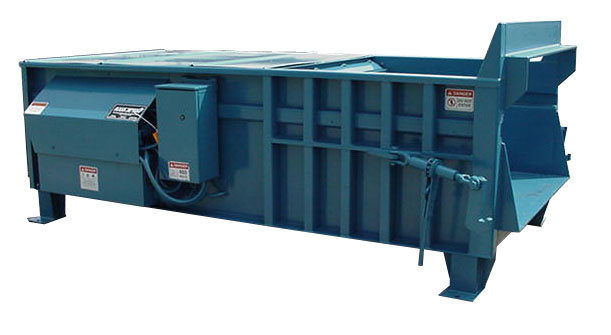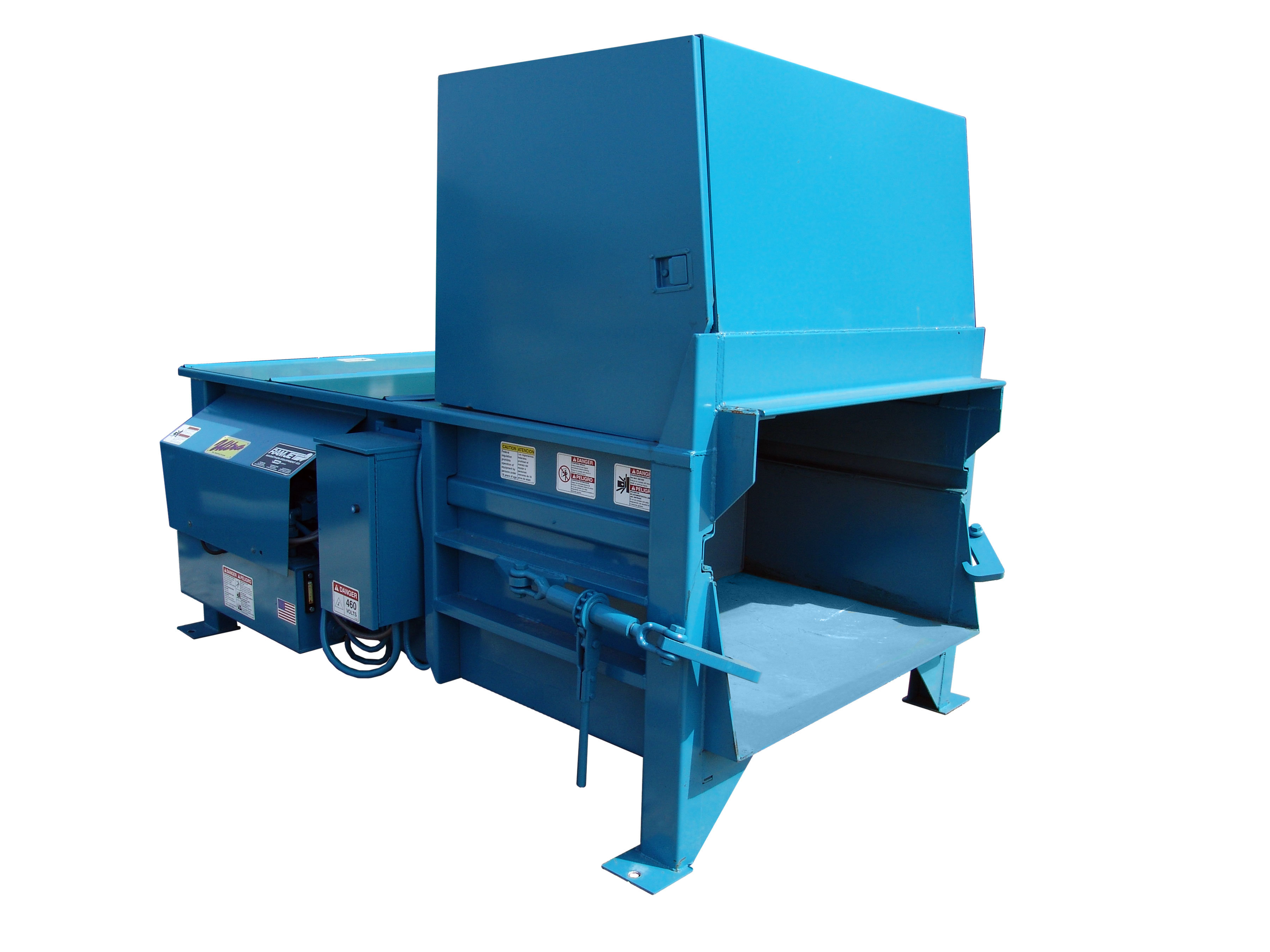A closer look at Commercial trash compaction equipment for better waste solutions
Recognizing the Different Uses of Waste Tools in the Recycling Market
The reusing market relies greatly on specialized waste devices to enhance handling and healing. Each tool, from shredders to balers, offers an unique purpose that improves overall efficiency. Recognizing these functions is vital for boosting sustainability efforts. Commercial garbage compaction equipment. As innovation advancements, brand-new advancements emerge, assuring to transform typical methods. This advancement raises crucial questions regarding the future of waste monitoring and its effect on ecological preservation. What adjustments exist in advance for this vital market?
The Function of Shredders in Material Handling
Shredders play a vital duty in the reusing sector by effectively processing different kinds of waste products. These makers are developed to decrease big products, such as plastics, steels, and natural waste, into smaller, workable items. This dimension reduction is important for subsequent recycling procedures, as it permits much easier handling and sorting. In enhancement to facilitating recycling, shredders improve security by decreasing the risk of injury related to taking care of large waste items.
Furthermore, shredders add to environmental sustainability by ensuring that products are refined in such a way that maximizes resource recovery. They can manage a diverse variety of materials, making them functional tools in waste management centers. The effective procedure of shredders not just improves the reusing process however additionally increases the general performance of waste diversion initiatives, advertising a round economic situation. Their relevance in material processing can not be overemphasized, as they function as a foundational step in the direction of sustainable waste management techniques.

How Balers Enhance Effectiveness in Waste Monitoring
Balers significantly boost efficiency in waste management by condensing various materials right into bundles, which simplifies storage and transportation. By compressing recyclables such as cardboard, plastics, and steels, balers significantly minimize the quantity of waste. This compression not only makes best use of space in reusing centers yet also reduces the number of journeys required to deliver materials, leading to lower gas prices and minimized ecological influence.
Moreover, balers add to boosted security in waste administration procedures. Compact bundles are less complicated to handle and pile, lowering the threat of crashes related to loosened products. The consistent size of bales permits more effective packing and discharging processes, streamlining procedures within reusing centers. Additionally, balers can improve the total quality of recyclables, as appropriately compressed materials are much less most likely to be infected. On the whole, balers play a crucial function in enhancing waste administration practices, advertising sustainability in the recycling market.
Conveyor Equipments: Improving the Recycling Refine
Integrating advanced equipment like balers considerably boosts waste monitoring operations, yet the effectiveness of the recycling process is further boosted through making use of conveyor systems. These systems play an important role in the seamless transportation of materials within recycling facilities. By promoting the movement of different waste types, conveyor systems minimize manual handling and lower the threat of contamination during the reusing procedure.
Conveyor systems can be personalized to fit the unique layouts and functional needs of reusing centers. Their capacity to run constantly allows for a consistent circulation of materials, improving performance and guaranteeing that refining and sorting tools receives a consistent supply.
Furnished with attributes like adjustable speeds and automated controls, conveyor systems can optimize the circulation of products, significantly improving total performance (Commercial garbage compaction equipment). These systems are vital in modern recycling procedures, improving procedures and contributing to reliable waste administration.
Sorting Equipments: The Key to Material Healing
Arranging makers are necessary parts in the recycling sector, substantially improving the performance of material recuperation. These equipments play a pivotal function in the splitting up of numerous recyclable materials, permitting a structured process that makes best use of resource removal. By using view it sophisticated technologies, such as optical sensing units and air classifiers, arranging makers can recognize and categorize products based upon their dimension, structure, and weight. This capacity ensures that metals, plastics, and paper items are successfully isolated, decreasing contamination and improving the high quality of recycled outcome.
The procedure of arranging devices considerably lowers the reliance on manual work, which can be both prone and taxing to errors - Commercial garbage compaction equipment. Additionally, the automation supplied by these machines increases the overall recycling process, causing greater throughput and boosted functional performance. Arranging devices are indispensable in accomplishing sustainable waste administration objectives, allowing the recycling sector to efficiently recuperate important products while minimizing land fill reliance.
Innovations in Waste Devices for a Lasting Future
Current improvements in waste equipment are driving the recycling market toward an extra sustainable future. Developments such as automated sorting systems, which use expert system and artificial intelligence, boost efficiency by properly identifying and separating recyclables. This causes higher healing prices and decreased contamination. In addition, advancements in condensing innovation enable more efficient transport of materials, lessening carbon impacts during transit.
Improvements in shredding devices boost the processing of intricate materials, allowing the recycling of items that were as soon as deemed non-recyclable. The combination of renewable see here energy resources, like solar energy, in waste processing facilities better adds to sustainability goals. Furthermore, technologies in eco-friendly products and waste-to-energy innovations are reshaping the landscape of waste administration. Jointly, these developments indicate a transformative shift within the recycling market, promoting not just ecological defense however likewise economic feasibility for future generations.
Regularly Asked Inquiries
What Sorts Of Materials Can Waste Tools Manage?
The kinds of products waste equipment can manage include plastics, metals, paper, glass, and natural waste. Each tools type is made for specific products, maximizing performance and efficiency in sorting and processing different waste streams.
Exactly How Commonly Should Waste Devices Be Preserved?

Are There Security Worry About Using Waste Tools?
Security worry about utilizing waste tools include potential injuries from mechanical breakdowns, direct exposure to unsafe products, and inadequate training. Appropriate upkeep, normal examinations, and staff member education are important to mitigate these threats efficiently in any setup.
What Is the Ordinary Lifespan of Recycling Tools?
The average life-span of recycling devices normally varies from 10 to twenty years, depending on elements such as use intensity, upkeep practices, and technical advancements, which can significantly influence durability and effectiveness with time.
Just How Is Waste Devices Powered in Recycling Facilities?
Waste equipment in recycling centers is usually powered by power, though some equipments may make use of alternate energy sources like natural gas or diesel. This power makes it possible for efficient processing and improvement of products for reusing functions.
Shredders play a crucial function in the reusing industry by successfully refining different kinds of waste products. They can take care of a diverse variety of products, making them functional tools in waste monitoring facilities. Balers significantly improve performance in waste monitoring by condensing numerous materials right into bales, which simplifies storage and transport. The types of products waste devices can handle include plastics, metals, paper, glass, and natural waste. Safety and security concerns with utilizing waste equipment include possible injuries from mechanical breakdowns, exposure to unsafe products, browse around here and insufficient training.